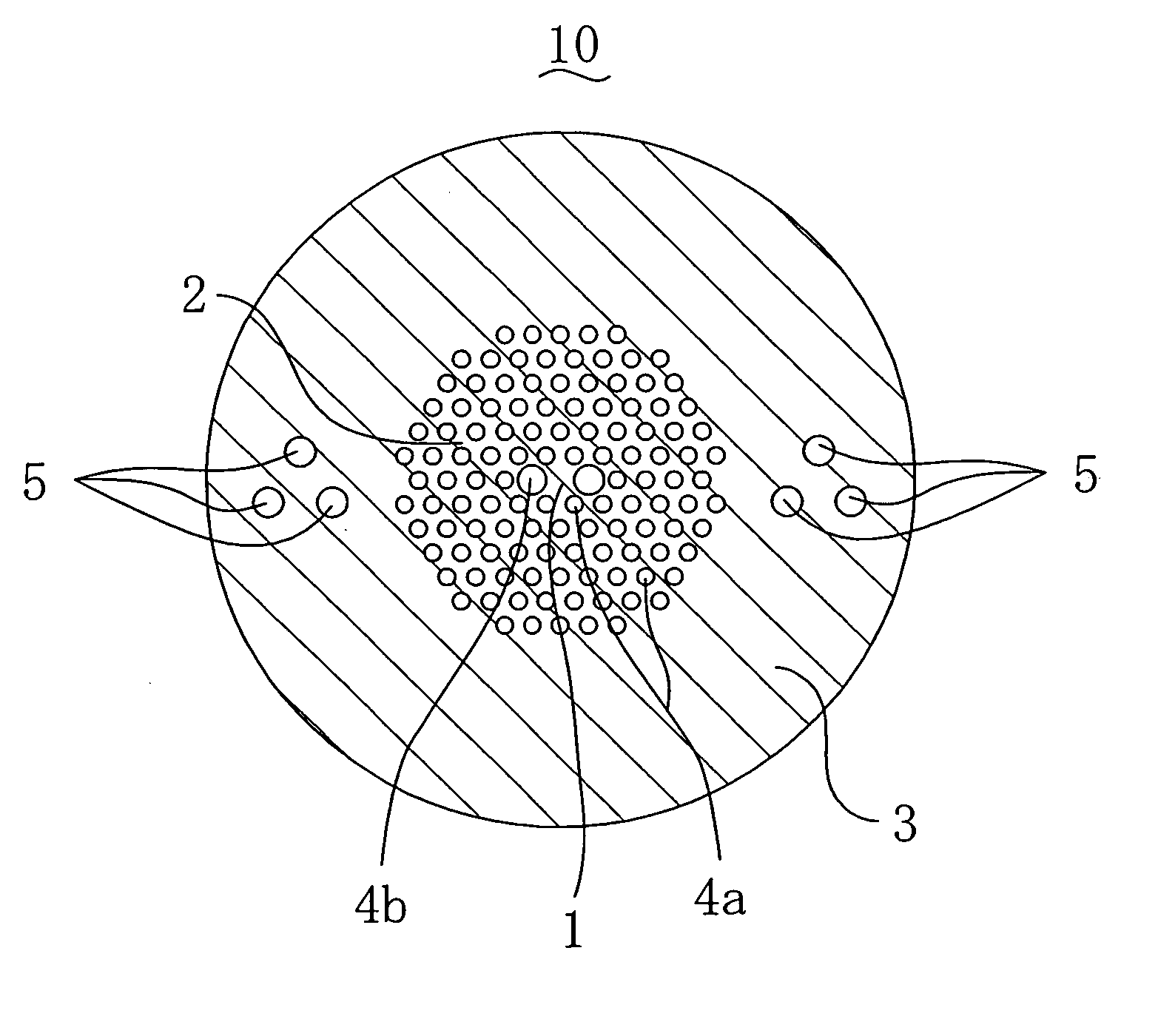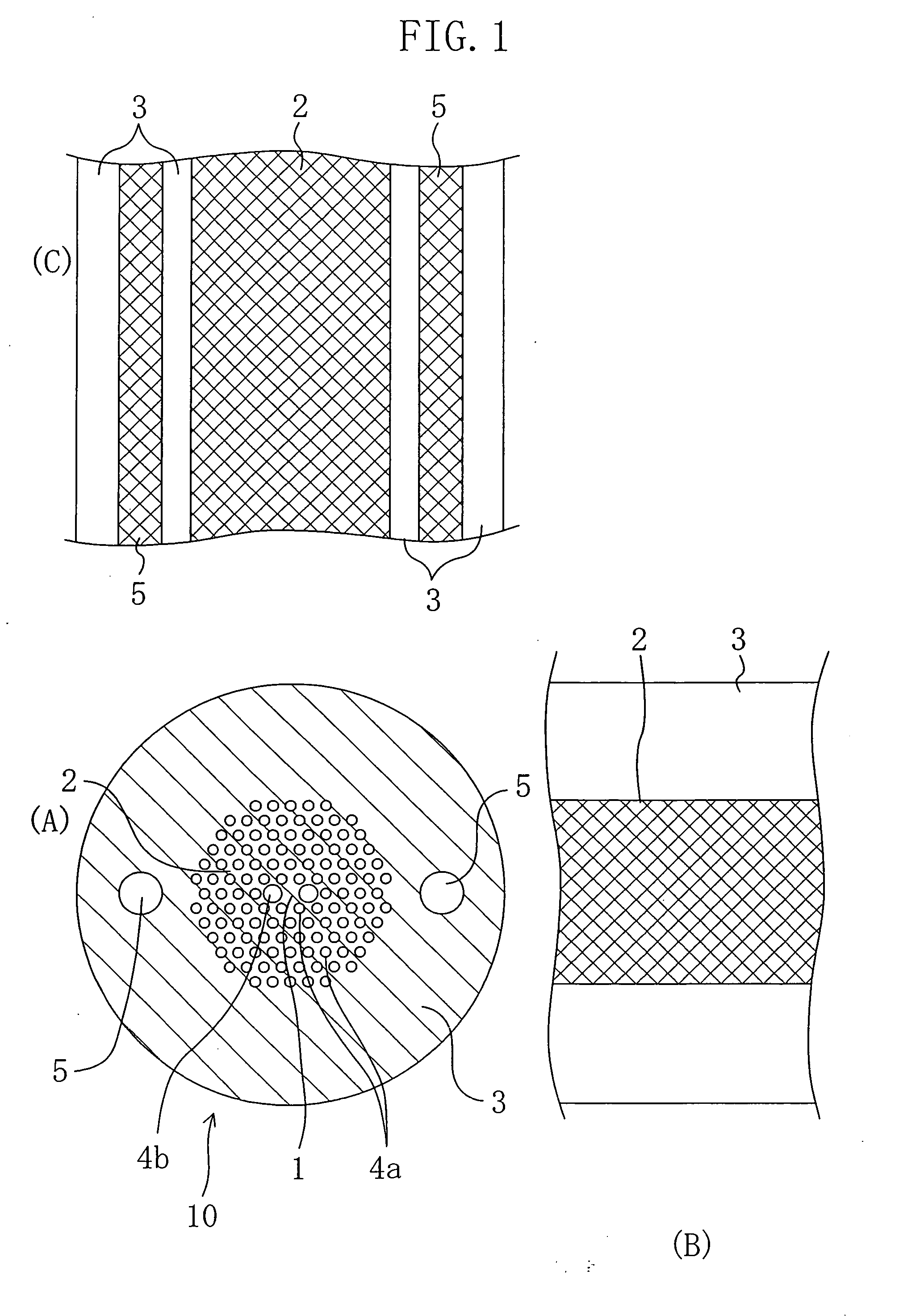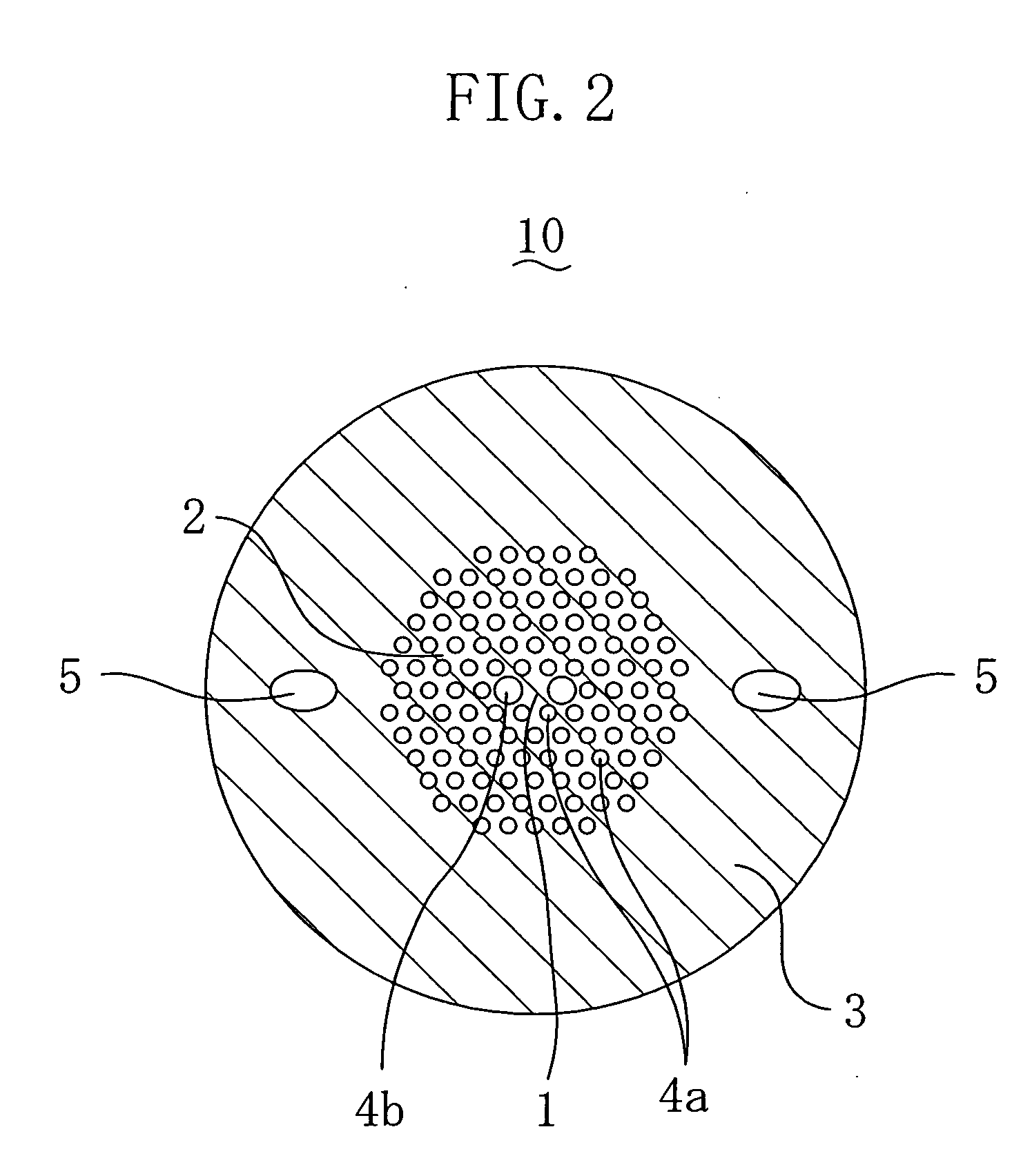Polarization retaining photonic crystal fiber
a polarization-maintaining and photonic crystal fiber technology, applied in the direction of optical fibers with polarisation, instruments, manufacturing tools, etc., can solve the problems of difficult splicing of two polarization-maintaining photonic crystal fibers, polarization planes cannot be identified, etc., to achieve easy splicing, easy identification, and easy fabricated
- Summary
- Abstract
- Description
- Claims
- Application Information
AI Technical Summary
Benefits of technology
Problems solved by technology
Method used
Image
Examples
embodiment 1
[0028] (Embodiment 1)
[0029]FIG. 1(A) is a cross-sectional view of a polarization-maintaining photonic crystal fiber 10 of embodiment 1. The polarization-maintaining photonic crystal fiber 10 includes a core 1 made of silica glass, a clad layer 2 surrounding the core 1, and an overclad layer 3 made of silica glass around the clad layer 2. The clad layer 2 includes a large number of thin holes 4a and 4b extending along the fiber axis. The thin holes 4a and 4b are arranged in a crystalline formation in which the minimum unit is a right triangular lattice. The overclad layer 3 has a pair of marking portions 5 at symmetric positions with respect to the core 1.
[0030] In the polarization-maintaining photonic crystal fiber 10, there are six thin holes 4a and 4b adjacent to the core 1. Among these holes, a pair of holes 4b at opposite sides of the core 1 have a diameter greater than that of the other four thin holes 4a. With such an arrangement of the thin holes 4a and 4b, the optical fiber...
embodiment 2
[0042] (Embodiment 2)
[0043]FIG. 2 is a cross-sectional view of a polarization-maintaining photonic crystal fiber 10 of embodiment 2. Embodiment 2 is different from embodiment 1 in that each of the marking portions 5 has an oval cross section. The direction of the major axis of the oval is generally equal to the direction in which a line between the centers of the two marking portions 5 extends. Herein, the major axis diameter of the oval of embodiment 2 is generally equal to the diameter of the circle of the marking portions 5 of embodiment 1. Thus, the viewability from the side of the fiber 10 is the same, but the inner surface area of the marking portion 5 per unit length of the fiber 10 is smaller in embodiment 2 than in embodiment 1. Thus, the number of rupture starting points which occur when the fiber is bent is smaller in embodiment 2 than in embodiment 1. That is, the fiber of embodiment 2 has a stronger mechanical strength than that of embodiment 1. The other functions and ...
embodiment 3
[0044] (Embodiment 3)
[0045]FIG. 3 is a cross-sectional view of a polarization-maintaining photonic crystal fiber 10 of embodiment 3. Embodiment 3 is different from embodiment 1 in that the marking portions 5 are holes having a smaller diameter than that of embodiment 1. The viewability from the side of the fiber 10 of embodiment 3 is inferior to that of embodiment 1. However, the inner surface area of the marking portion 5 per unit length of the fiber 10 is smaller in embodiment 3 than in embodiment 1. Thus, the fiber of embodiment 3 has a stronger mechanical strength than that of embodiment 1. The other functions and effects are equivalent to those of embodiment 1. The production method is also equivalent to that of embodiment 1.
PUM
| Property | Measurement | Unit |
|---|---|---|
| Diameter | aaaaa | aaaaa |
| Refractive index | aaaaa | aaaaa |
Abstract
Description
Claims
Application Information
 Login to View More
Login to View More - R&D
- Intellectual Property
- Life Sciences
- Materials
- Tech Scout
- Unparalleled Data Quality
- Higher Quality Content
- 60% Fewer Hallucinations
Browse by: Latest US Patents, China's latest patents, Technical Efficacy Thesaurus, Application Domain, Technology Topic, Popular Technical Reports.
© 2025 PatSnap. All rights reserved.Legal|Privacy policy|Modern Slavery Act Transparency Statement|Sitemap|About US| Contact US: help@patsnap.com



